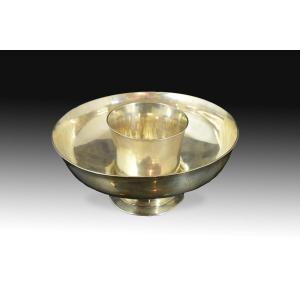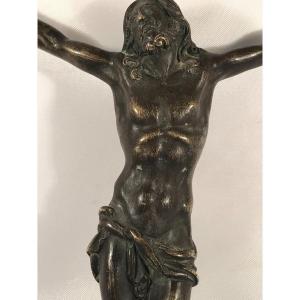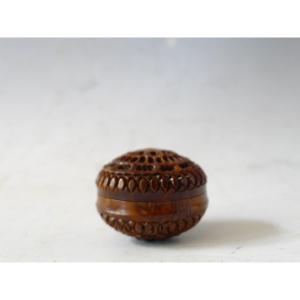A polychrome wooden carving with gold highlights depicting the Virgin Mary seated on a low throne, wearing a cloak, tunic, crown, headdress, and jewels, holding an open flower in her right hand and resting her right hand on the Child's shoulder. Jesus appears seated on his Mother's left knee, blessing with his right hand and holding a golden orb in his left. Iconographically, this type of work was common during the Romanesque period in Europe, a time when Christian theology viewed the Virgin as a vehicle of salvation, thanks to the figure of her son Jesus. Over time (and with the theological work of highlighting Mary's role as Mother of God), the initially hieratic pose of this group varied, an example of which is the present sculpture. It is worth highlighting the presence of the flower, similar to a lily, which was considered a symbol of purity and virginity since the 12th century. Compare, for example, with the carving held by the Prado Museum in Madrid (catalogue E000447), also dated to the 14th century; with the 13th-century carving from Mojares in the Diocesan Museum of Sigüenza; the carving from the early 14th century known as Our Lady the Ancient in Galbárruli (La Rioja); the carving from the Parish of San Andrés in Vitoria, dated to the 13th-14th centuries; etc. It is worth noting that it is such a common model that it served as inspiration for much later works (the 17th-century Virgin Enthroned with Child in the Museum of Decorative Arts in Chile, inventory number 24.83.32, is from the 17th century). ·
Size: 29x17x58 cm














































 Le Magazine de PROANTIC
Le Magazine de PROANTIC TRÉSORS Magazine
TRÉSORS Magazine Rivista Artiquariato
Rivista Artiquariato